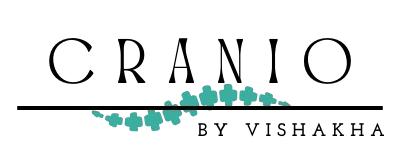Craniosacral Therapy for Migraines and Headaches: Does It Actually Work?
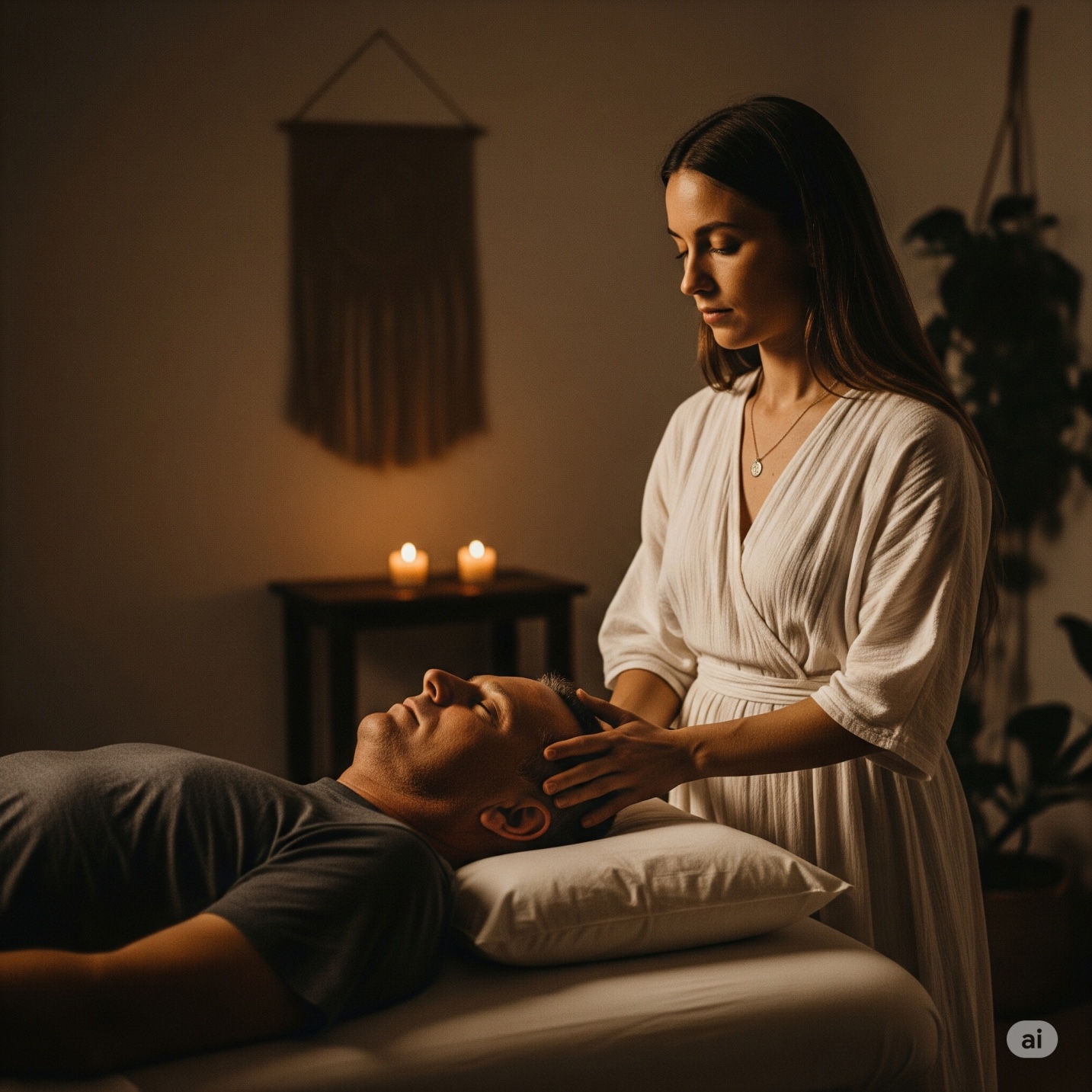
Craniosacral Therapy for Migraines and Headaches: Does It Actually Work? Migraines and chronic headaches can disrupt every aspect of life from your work and focus to sleep and mood. If you’ve tried everything from medications to lifestyle changes and still find yourself in pain, it may be time to explore Craniosacral Therapy (CST) a gentle, hands-on therapy that addresses the root of tension and imbalance in your body. In this post, we’ll explore how CST can support migraine and headache relief, what science says, what to expect in a session, and whether it’s the right fit for you. ✅ What Is Craniosacral Therapy (CST)? Craniosacral Therapy is a subtle bodywork technique that works with the craniosacral system the membranes and cerebrospinal fluid that surround your brain and spinal cord. By applying gentle pressure to the skull, spine, and pelvis, a trained therapist can help release restrictions in the nervous system. This often results in reduced pain, deeper relaxation, and enhanced self-regulation. 💥 How Does CST Help with Migraines and Headaches? Here’s how CST may benefit those struggling with recurring headaches and migraines: 1. Releases Tension in the Head and Neck CST helps unwind tension patterns in the cranial bones, jaw, upper spine, and soft tissues areas often linked to migraines. 2. Balances the Nervous System Migraines are often a result of nervous system overload. CST works with the parasympathetic nervous system, helping shift your body from “fight or flight” to “rest and repair.” 3. Improves Fluid Flow Restricted movement of cerebrospinal fluid may contribute to intracranial pressure. CST supports better fluid circulation, which can ease head pressure. 4. Addresses Root Causes Rather than masking symptoms, CST gently works with your body’s patterns, supporting deep healing over time. 🧠 What Does Science Say? While large-scale studies are still limited, early research and clinical reports show promising results: 🙋♀️ What to Expect in a Session 📍Who Can Benefit from CST for Migraines? ⚠️ When to See a Doctor If your headache is sudden, severe, or accompanied by vision loss, confusion, or numbness, consult a medical doctor immediately. 📲 Let’s Connect on Instagram Curious to see how a real session looks or hear stories from people who’ve tried CST for migraines? 👉 Follow me on Instagram: @craniobyvishakhaI share behind-the-scenes from my sessions, real client journeys, and quick insights into how craniosacral therapy works. 🔍 Final Thoughts: Does It Actually Work? If you’ve been asking, “Can craniosacral therapy help my migraines?” the answer is: yes, it will. CST offers a gentle, deeply therapeutic approach to helping your body heal from within. Many clients find real, lasting relief often when everything else has failed. craniosacral therapy for migraines, craniosacral therapy for headaches, natural migraine relief Gurugram, migraine therapist near me, alternative therapy for migraines, how to relieve tension headaches naturally, CST for head pain, migraine relief without medication, craniosacral therapy India
How Many Craniosacral Therapy Sessions Do You Really Need? What to Expect Over Time
How Many Craniosacral Therapy Sessions Do You Really Need? What to Expect Over Time If you’re considering Biodynamic Craniosacral Therapy (BCST) and wondering,“Will one session be enough?” or “Do I need to commit to months of therapy?” you’re not alone. As a Biodynamic Craniosacral Therapist in Gurugram, I often get this question during first consultations. The truth is: there’s no one-size-fits-all answer but there is a pattern most people can expect. In this post, I’ll break it down simply so you know what to expect, how many sessions might be right for you, and how to get the most out of your CST journey. 🌀 Craniosacral Therapy is a Process — Not a Quick Fix CST works by helping your nervous system regulate, your body unwind deeply held tension, and your natural healing mechanisms reawaken. Because this happens gently and gradually, it’s very different from a “fix-it-fast” approach. Most people feel calmer after just one session but lasting changes tend to unfold over a few weeks or months, depending on what you’re working with. 📅 So, How Many Sessions Do You Really Need? Here’s a general guide: ✅ 1–3 Sessions Great for: What to expect:You may feel lighter, calmer, or more connected to your body. It’s a great introduction to how CST works. ✅ 4–6 Sessions (Weekly or Biweekly) Great for: What to expect:Your system begins to trust the process. Patterns start to shift. You might notice more energy, better sleep, less reactivity, and increased emotional resilience. ✅ 8–10+ Sessions (Ongoing or spaced out) Great for: What to expect:This is where deep transformation happens. You’ll often feel more grounded, present, and in sync with your body. Sessions become a form of ongoing support rather than “treatment.” 🧘♀️ How Often Should I Come for CST? It’s always your choice. There’s no pressure or package just what feels right for your body and your journey. 💡 Bonus Tip: BCST Works Best When You’re Consistent (But Not Perfect) You don’t need to come forever or commit to rigid timelines. But if you want real, sustained change, give your body the time to shift at its own pace. CST isn’t about fixing it’s about allowing.And with each session, your system learns how to settle, soften, and self-regulate. ✨ Final Thoughts from a BCST Therapist in Gurugram Whether you’re navigating chronic stress, postpartum exhaustion, trauma, or simply want to reconnect with your body, CST can be a powerful ally. No two journeys are the same. Some feel a huge shift in 2 sessions, others find a rhythm over 10. The most important thing? Start. Listen. Let your body guide the way. 📍 Ready to begin your Craniosacral Therapy journey in Gurugram? Let’s explore what your nervous system needs. DM on Instagram to book a session or ask your questions. https://www.instagram.com/craniobyvishakha #craniosacraltherapygurugram #bcstindia #howmanysessions #nervoussystemhealing #somatictherapy #bodymindhealing #gentletouchbigimpact #postpartumrecovery #traumahealingindia #burnoutsupport #selfregulationtherapy
Top 5 Myths About Craniosacral Therapy—Debunked by a Biodynamic Craniosacral Therapist in Gurugram
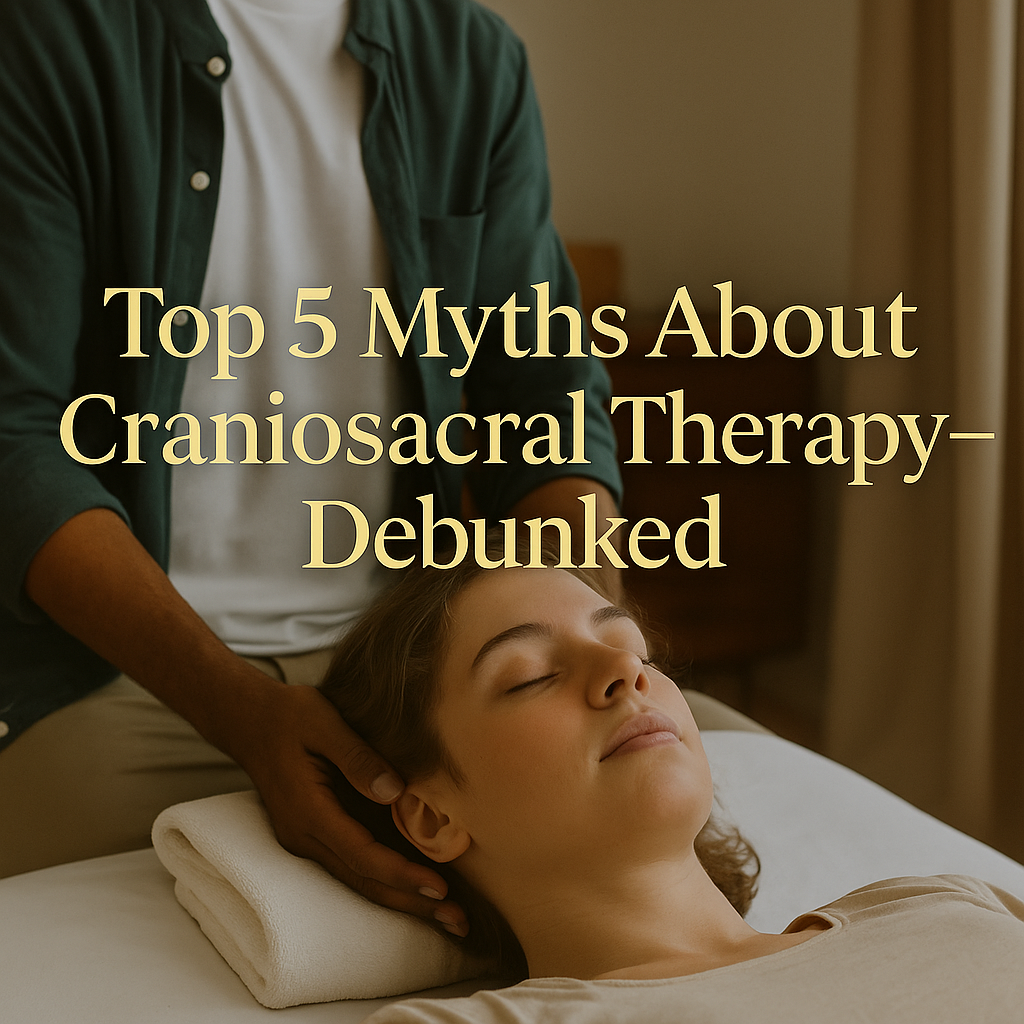
Top 5 Myths About Craniosacral Therapy—Debunked by a Biodynamic Craniosacral Therapist in Gurugram If you’ve ever heard about Craniosacral Therapy (CST) and thought, “Sounds interesting, but is it real?” you’re not alone. As a Biodynamic Craniosacral Therapist based in Gurugram, I meet many curious clients who are unsure of what CST is, what it does, and whether it works. And that’s fair CST is gentle, subtle, and very different from what most people are used to. So let’s clear the air.Here are the top 5 myths about Craniosacral Therapy and the facts that can help you make an informed choice. ✅ Myth 1: Craniosacral Therapy is just a head massage. Fact: While “cranio” refers to the skull, CST works with the entire body from the head down to the sacrum (the base of your spine).It’s not a massage. The therapist uses gentle, hands-on contact to support the body’s natural ability to heal by listening to the nervous system, fascia, and fluid rhythms. ✅ Myth 2: It’s not real science. Fact: CST is based on anatomy, physiology, and decades of clinical experience.It supports the craniosacral system, which includes the brain, spinal cord, membranes, and cerebrospinal fluid.Though it’s gentle, its effects on the nervous system, stress regulation, and trauma release are profound and measurable. ✅ Myth 3: It’s only for people with chronic pain. Fact: CST is beneficial for everyone not just those in pain.Whether you’re dealing with stress, anxiety, burnout, fatigue, sleep issues, or simply want to feel more balanced, CST helps you reset and reconnect with your body’s natural rhythms. ✅ Myth 4: You have to “believe in it” for it to work. Fact: This isn’t a placebo-based practice. CST works on a physiological level, whether or not you understand or “believe” in it.Most clients experience deep calm, emotional release, or improved symptoms even if they were skeptical at first. ✅ Myth 5: It’s too gentle to make a difference. Fact: Gentle doesn’t mean ineffective.In fact, the nervous system responds better to safety and stillness than force. That’s why CST can create lasting shifts because it works with your body, not against it. 🌿 Final Thoughts: Why More People in the World Are Turning to Craniosacral Therapy As life gets faster and stress becomes chronic, we need healing approaches that offer nervous system regulation, not just symptom relief.Biodynamic Craniosacral Therapy is a safe, non-invasive way to support the whole person – body, mind, and emotions. If you’re in Gurugram and curious to try CST, I invite you to book a session and feel the difference. Alternatively, you can take an online session if you are located anywhere in the world. 🌀 Your body knows how to heal. CST helps it remember. 📍 Book your Biodynamic Craniosacral Therapy session in Gurugram today DM on Instagram for more details – https://www.instagram.com/craniobyvishakha
Biodynamic Craniosacral Therapy for Babies and New Moms: A Gentle Start to Healing
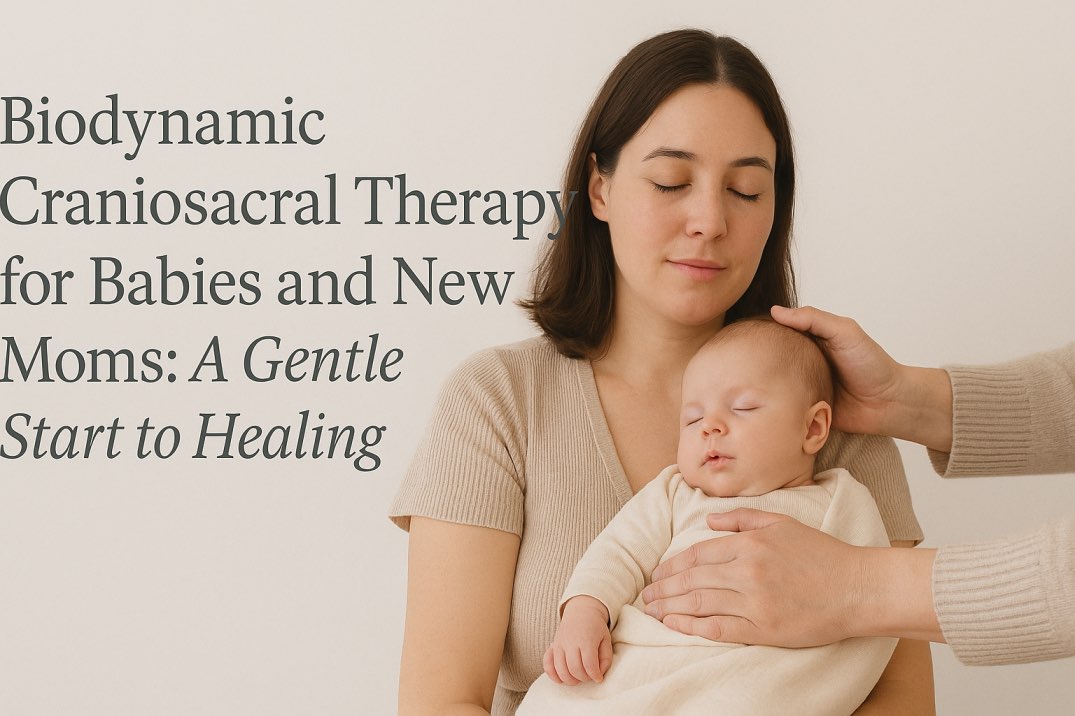
Biodynamic Craniosacral Therapy for Babies and New Moms: A Gentle Start to Healing Bringing a new life into the world is magical but it can also be overwhelming. Birth, no matter how smooth, is a physically and emotionally intense experience for both the baby and the mother. While we often focus on the baby’s feeding and sleep schedules, we sometimes overlook the body’s need to release and reset after birth. That’s where Biodynamic Craniosacral Therapy (BCST) steps in as a gentle, nurturing form of care that supports both newborns and new mothers in their healing journeys. 🌼 What Is Biodynamic Craniosacral Therapy (BCST)? BCST is a subtle, hands-on therapy that works with the body’s own rhythms and healing intelligence. It involves very light touch, often just holding the head, spine, or sacrum, to help release stored tension and trauma. For newborns, this can mean relief from the physical stress of birth. For moms, it helps calm the nervous system and support emotional balance during the postpartum phase. 👶 How Does BCST Help Babies? Birth can be tough especially if it involved: These events may cause tension in the baby’s body, especially in the head, neck, or nervous system. BCST helps by: It’s non-invasive, safe, and deeply supportive — babies often fall asleep during sessions! 🤱 How Does BCST Support New Mothers? Postpartum recovery isn’t just physical — it’s emotional, mental, and spiritual. Many moms experience: BCST can help mothers: You don’t need to say anything in a session, your body knows what to release, and BCST supports it in doing so, gently and without force. 💛 A Gentle Start to Lifelong Well-being Early support can make a huge difference. When babies feel safe and balanced in their bodies, they grow into calmer, more connected children. And when mothers are supported emotionally and physically, they are able to thrive not just survive in the postpartum phase. 📍 Available in Gurugram & Worldwide (Offline & Online Sessions) Whether you’re a new mom looking for support or want to give your baby the gentlest start possible I’d love to work with you. 🌿 Healing begins with being held. Let your nervous system soften and settle. 📩 DM on instagram https://www.instagram.com/craniobyvishakha/ or click the link to book your session.
Can Craniosacral Therapy Help with Anxiety and Stress? What the Research Says.
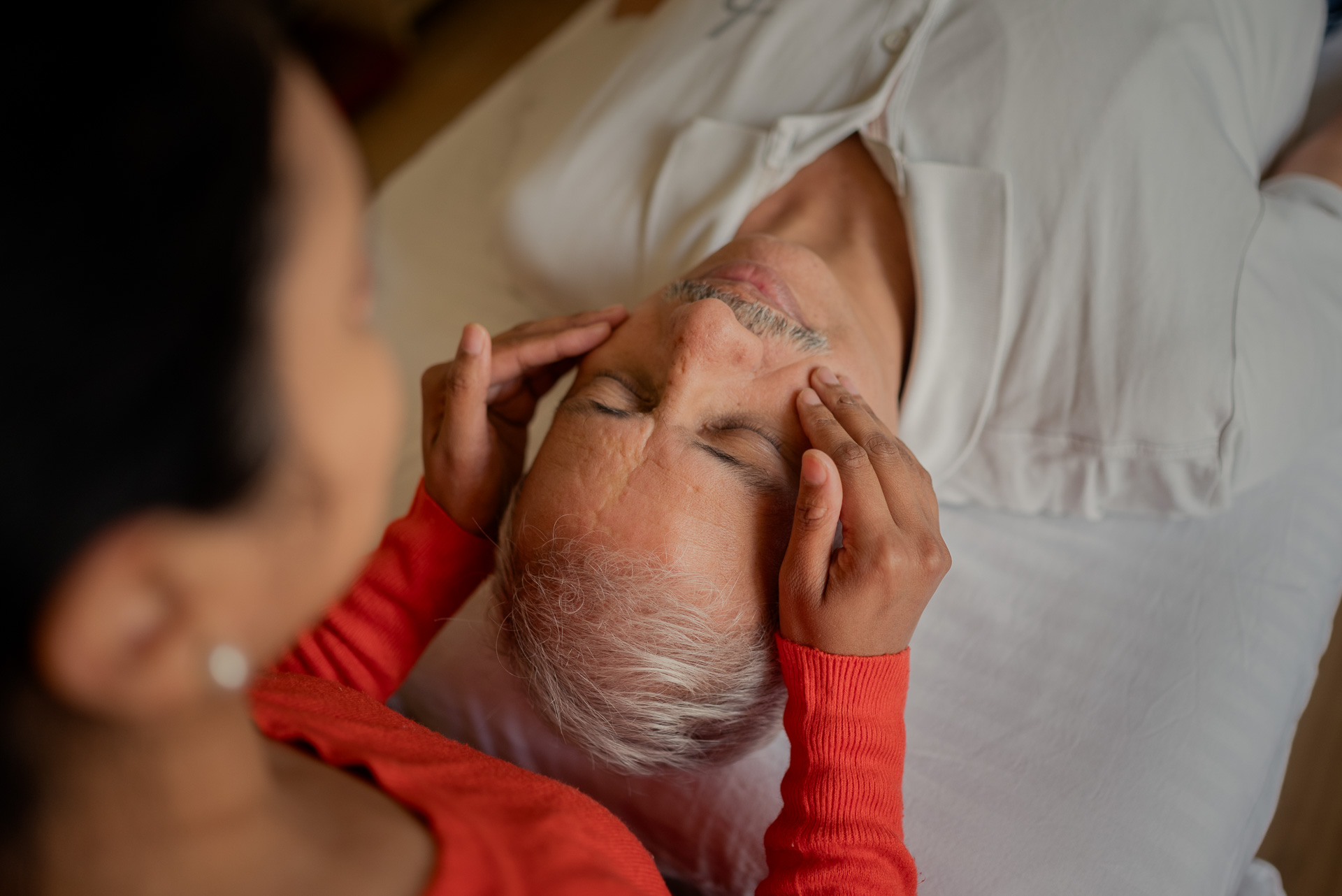
Can Craniosacral Therapy Help with Anxiety and Stress? What the Research Says. In a world that rarely slows down, anxiety and stress have become part of everyday life for many of us. Racing thoughts, tension in the body, trouble sleeping , they’re all signs that your nervous system might be overwhelmed. But what if the answer to feeling better wasn’t more doing — but rather, stillness? That’s where Craniosacral Therapy (CST) comes in. What Is Craniosacral Therapy? Craniosacral Therapy is a gentle, hands-on therapy that works with your body’s natural healing ability — especially your nervous system. Using light touch (no more than the weight of a coin), the therapist helps release tension held deep within the body. CST doesn’t push or manipulate — it listens. It helps your system slow down, shift out of “fight or flight,” and settle into rest. For many, that shift alone begins to ease anxiety and stress at the root. How CST Supports Anxiety and Stress Relief Here’s how it works: What the Research Says While CST is still an emerging field in terms of mainstream scientific research, several studies suggest promising outcomes: And perhaps the most powerful evidence?Clients consistently report that they feel calmer, sleep better, and cope more easily with daily life after CST. Real People. Real Shifts. As a Craniosacral Therapist, I often hear clients say things like: “I didn’t know I was holding so much tension until it let go.”“I feel like I can breathe again.”“I sleep better now and feel more grounded through the day.” These are people who were stuck in stress mode, until their body finally got the signal: it’s safe to slow down. Is CST Right for You? If you’ve tried all the usual tools — breathing apps, supplements, yoga — but still feel overwhelmed… 🌿 CST might offer a different kind of support. One that starts in the body and gently rewires the way you experience stress. Book a Craniosacral Therapy Session in Gurugram You don’t have to live in a constant state of tension.Let your nervous system breathe.Let your body reset.Let calm feel natural again. 📍 Sessions available in Sector 61, Gurugram (in-person) or online✨ Your calm is closer than you think.
Craniosacral Therapy vs. Physiotherapy: Which One Should You Choose for Chronic Pain?

Craniosacral Therapy vs. Physiotherapy: Which One Should You Choose for Chronic Pain? If you’ve been living with chronic pain—whether it’s in your back, neck, jaw, or head, you’ve likely been told to try physiotherapy. While it’s a common recommendation, it’s not the only option. There’s another, lesser-known healing approach that’s helping people experience deep relief, especially when traditional methods haven’t worked:Craniosacral Therapy (CST). Let’s explore the key differences between physiotherapy and CST, and why more people are turning to this gentle, nervous-system-based therapy for lasting pain relief. 💪 What Is Physiotherapy? Physiotherapy is a movement-based therapy that focuses on treating injuries and improving physical strength, flexibility, and mobility. It often involves exercises, stretches, and manual adjustments to help with recovery from surgery, sports injuries, or muscular issues. It’s ideal for: While physiotherapy works directly with the muscles and joints, it may not always address underlying nervous system tension, especially if your pain is stress-related, chronic, or emotional in origin. 🌿 What Is Craniosacral Therapy (CST)? Craniosacral Therapy is a gentle, hands-on approach that supports your body’s natural healing by working with the nervous system. Using light touch, often no more than the weight of a coin, CST helps release tension stored deep in the body—especially around the brain, spinal cord, and connective tissues. This allows your body to shift from a state of “survival” (fight-or-flight) into one of true rest, repair, and healing. CST is especially helpful for: 🤔 So Which One Should You Choose? Both therapies have their place. But if you’ve tried physiotherapy and still experience pain—or if your body feels tense, stressed, or constantly tired—Craniosacral Therapy could be exactly what you need. Here’s a quick comparison: Aspect Physiotherapy Craniosacral Therapy (CST) Approach Physical, exercise-based Gentle, nervous-system-based Touch Active, structured movement Light, calming touch Focus Area Muscles, joints, physical rehab Nervous system, craniosacral system Healing Style Physical recovery Whole-body release + emotional calm Best For Injuries, movement rehab Chronic pain, trauma, anxiety, nervous tension ✨ Why CST Might Be the Missing Piece in Your Healing Sometimes, chronic pain isn’t just about “tight muscles” or “poor posture.” It’s about a nervous system stuck in stress mode and CST speaks directly to that part of you. Many clients who try Craniosacral Therapy say things like: “I didn’t realize how much tension I was holding.”“I finally felt my body let go.”“I’ve never experienced such deep relaxation before.” The results are often subtle but powerful because CST works at the root of the issue, not just the symptoms. 💛 Still Not Sure? Listen to Your Body If you feel like your body is always on edge…If you’ve tried everything and still feel stuck in pain…If you want something gentle, nurturing, and deeply restorative… Then Craniosacral Therapy is worth exploring. 🌼 Book a Session in Gurugram Vishakha is a certified Biodynamic Craniosacral Therapist based in Gurugram, helping clients release pain, tension, and trauma, gently and holistically. Your body already knows how to heal. CST simply gives it the space to do so. 📍 Ready to experience it for yourself?[Book your session with Vishakha today]
Who Offers the Best Craniosacral Therapy in Gurgaon? [2025 Guide]
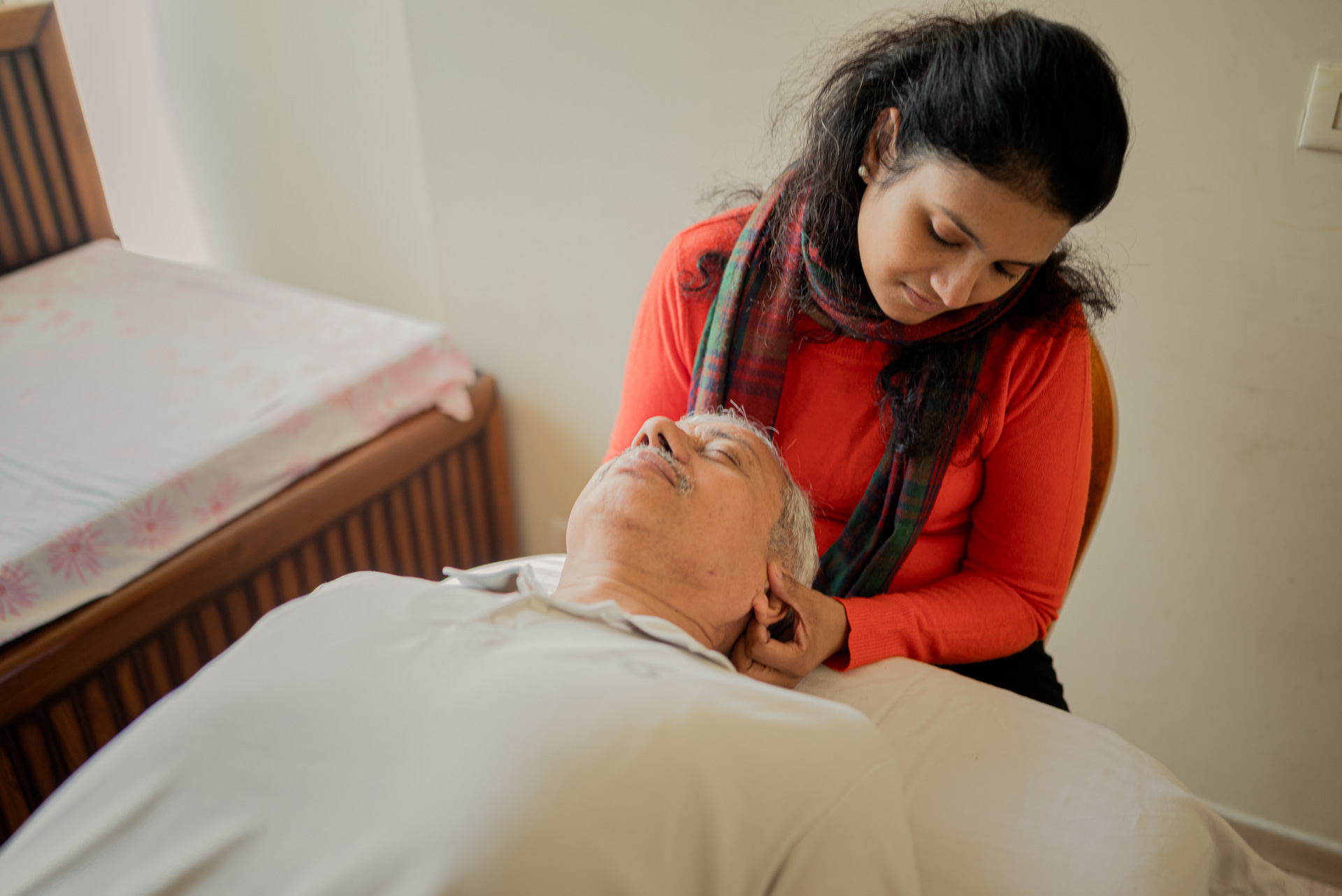
Who Offers the Best Craniosacral Therapy in Gurgaon? [2025 Guide] Craniosacral therapy (CST) is a gentle, hands-on approach to healing that focuses on the craniosacral system—comprising the membranes and cerebrospinal fluid that surround and protect the brain and spinal cord. It’s known for helping with a range of health issues, from chronic pain and stress to emotional imbalances and post-traumatic stress. But with so many wellness providers and clinics offering CST in Gurgaon, how can you know which one is the best? In this blog, we’ll explore craniosacral therapy, including the CST full form in medical terms, and why Cranio by Vishakha is one of the top destinations for this treatment in Gurgaon. We’ll also break down the different types of craniosacral therapy, the CST meaning in medical contexts, and why it’s worth considering as part of your wellness journey. What is Craniosacral Therapy? Craniosacral therapy is a therapeutic technique that aims to balance the body’s craniosacral system. It centers on the flow of cerebrospinal fluid, which the brain and spinal cord depend on for operation. By gently manipulating the skull, spine, and sacrum, CST therapy enhances the body’s natural healing abilities, allowing it to release tension, improve circulation, and support overall health. Although it might sound complicated, craniosacral therapy is non-invasive and extremely gentle. In fact, a typical craniosacral therapy session is incredibly relaxing, offering deep emotional and physical benefits. CST (Craniosacral Therapy) is increasingly recognized in both alternative and conventional medicine for its ability to support physical healing, relieve pain, and enhance emotional well-being. The Benefits of Craniosacral Therapy The benefits of craniosacral therapy can be quite diverse, depending on the individual’s needs. Some of the most common benefits include: Pain Relief: CST can help alleviate chronic pain, especially in areas like the back, neck, and head. It may help with TMJ, migraines, and fibromyalgia as well. Stress Reduction: The calming effects of CST are often helpful for those who are dealing with stress, anxiety, and emotional trauma. Improved Mobility: By reducing tension in the body, CST can help increase flexibility and range of motion, particularly for individuals recovering from injuries. Support for Emotional Health: Many individuals experience emotional release and healing during CST therapy sessions, as it helps address the connection between physical tension and emotional blockages. Better Sleep: Many patients report improved sleep patterns after just a few CST sessions, as the therapy supports relaxation and healing on a deeper level. Biodynamic Craniosacral Therapy vs. Traditional CST There are several types of craniosacral therapy, but one of the most notable is Biodynamic Craniosacral Therapy. While both Biodynamic CST and traditional CST share similar principles, Biodynamic craniosacral therapy places a greater emphasis on the body’s inherent self-healing capacities and the energetic field that surrounds it. In Biodynamic CST, practitioners focus on tuning into the body’s subtle rhythms to help release emotional and physical tensions stored in the body. This version of craniosacral therapy is particularly effective for people dealing with deep emotional trauma or long-standing tension patterns. CST Meaning in Medical Terms In medical terminology, CST stands for Craniosacral Therapy, a holistic treatment that is gaining increasing acceptance as a therapeutic modality. CST in medical terms refers to the manipulation of the craniosacral system to alleviate conditions such as chronic pain, migraines, stress, and trauma-related issues. CST meaning in medical contexts is often associated with complementary or alternative therapies, as it is typically not covered by traditional medical insurance. However, its benefits have made it a popular treatment option in clinics, wellness centers, and rehabilitation centers. CST full form medical and CST in medical terms might be less commonly discussed in conventional medical practices, but growing research and patient success stories suggest that craniosacral therapy is a valuable alternative treatment. Why Choose Cranio by Vishakha for Craniosacral Therapy? When it comes to finding the best craniosacral therapy near me in Gurgaon, one name that consistently stands out is Cranio by Vishakha. Here’s why: Experienced Practitioner: Vishakha is a certified CST therapist who has worked with a wide range of clients, helping them address both physical and emotional issues through craniosacral therapy. Her thorough knowledge of the craniosacral system guarantees that every session is catered to the particular requirements of the patient. Personalized Approach: At Cranio by Vishakha, each client’s journey is unique. The therapist takes time to understand the underlying causes of the patient’s symptoms and applies techniques that best suit their specific needs. Whether you’re dealing with stress, chronic pain, or emotional trauma, Vishakha offers a customized treatment plan for optimal results. Biodynamic Craniosacral Therapy: Vishakha specializes in Biodynamic Craniosacral Therapy, which takes into account not just the physical aspects but also the energetic and emotional components. This holistic approach ensures that the healing process works on multiple levels, supporting both the body and mind. Holistic Wellness: Cranio by Vishakha is more than just a treatment center; it’s a place for holistic wellness. In addition to craniosacral therapy, Vishakha also offers other forms of healing, such as energy work, meditation guidance, and emotional release techniques, creating a comprehensive wellness experience. Comfortable Environment: The center is designed to provide a calm, peaceful, and safe space for all clients. The soothing atmosphere helps clients relax and open up to the healing process, enhancing the effectiveness of each session. Proven Results: Many clients have experienced transformative results after working with Vishakha, including relief from chronic pain, reduction in stress and anxiety, and emotional healing. Her expertise and dedication to her clients have earned her a reputation as one of the top craniosacral therapy providers in Gurgaon. Conclusion If you’re searching for the best craniosacral therapy near me in Gurgaon, look no further than Cranio by Vishakha. With years of experience, a holistic approach to healing, and a focus on Biodynamic Craniosacral Therapy, Vishakha offers some of the best CST treatment in the region. Whether you’re dealing with physical pain, emotional stress, or looking for a deeper sense of well-being, craniosacral therapy can help guide you toward healing. Book
Craniosacral Therapy (CST): A Gentle Healing Approach for Modern Ailments in India
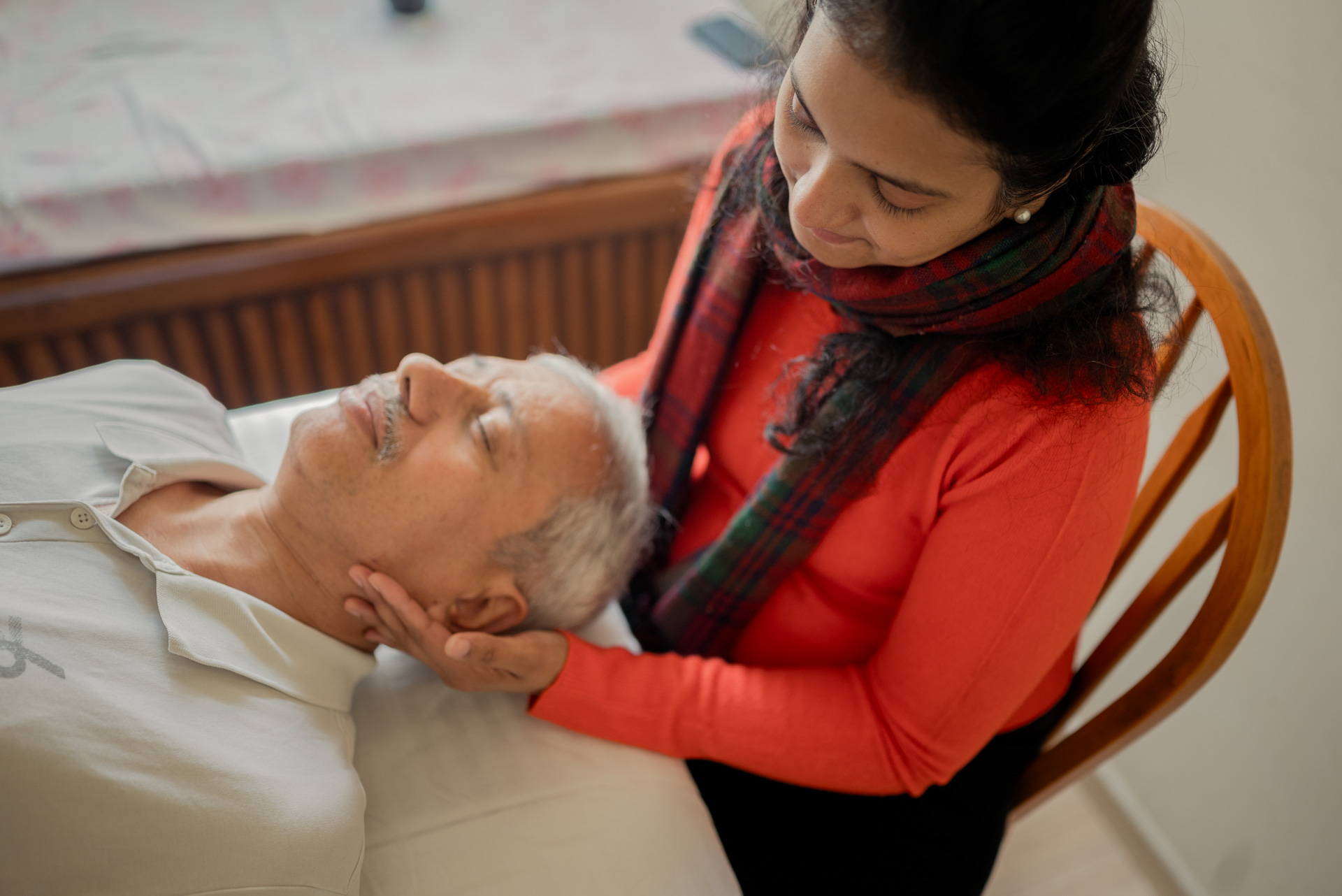
Craniosacral Therapy (CST): A Gentle Healing Approach for Modern Ailments in India Craniosacral Therapy (CST) is a gentle, non-invasive form of bodywork. It focuses on the craniosacral system—the membranes and fluid that protect the brain and spinal cord. CST helps release tension, improve fluid movement, and support your body’s natural healing ability. 🧠 What Is Craniosacral Therapy? Who Developed It? CST was developed by Dr. John Upledger in the 1980s. It’s based on osteopathic medicine. How It Works: 🚨 Why CST Is Important for India’s Health Problems India is facing a rise in: Main Causes: Mental health challenges ✅ Benefits of CST for Indian People Ailment How CST Helps Relevance in India Chronic Stress & Anxiety Regulates the nervous system (parasympathetic activation) Rising mental health issues in urban youth Migraines & Headaches Releases cranial tension, improves CSF flow High prevalence due to screen time & pollution Back & Neck Pain Corrects spinal misalignments gently Sedentary jobs, poor ergonomics Digestive Issues (IBS, Bloating) Balances vagus nerve (gut-brain connection) Processed food diets, stress-induced gut problems Insomnia & Fatigue Promotes deep relaxation, resets sleep cycles 1 in 3 Indians suffer from poor sleep (NCBI study) Autoimmune Conditions Reduces inflammation via fascial release Rising cases of thyroiditis, arthritis Post-Injury/Trauma Recovery Helps release stored trauma in tissues Accident recovery, post-surgical healing 🌟 Why CST Is Becoming Popular in India 📍 Where to Get CST in India You can find certified CST practitioners in: 💰 CST Session Cost in India 📊 Real-Life Case Study: CST for Office Workers Problem: IT professionals with neck pain, migraines, and stress CST Plan: 6 sessions in 3 months Results: 🔮 The Future of CST in India CST can become a big part of healthcare in India: Challenge: India needs more trained CST therapists and health insurance support. 🧘♀️ Final Takeaway Craniosacral Therapy is a gentle, effective, and natural way to handle India’s growing health problems. Whether you’re dealing with stress, chronic pain, or recovery, CST offers a safe and powerful healing option. 👉 Book your session now at craniobyvishaka.com and start your healing journey today.
What to Expect in a Craniosacral Therapy (CST) Session in India
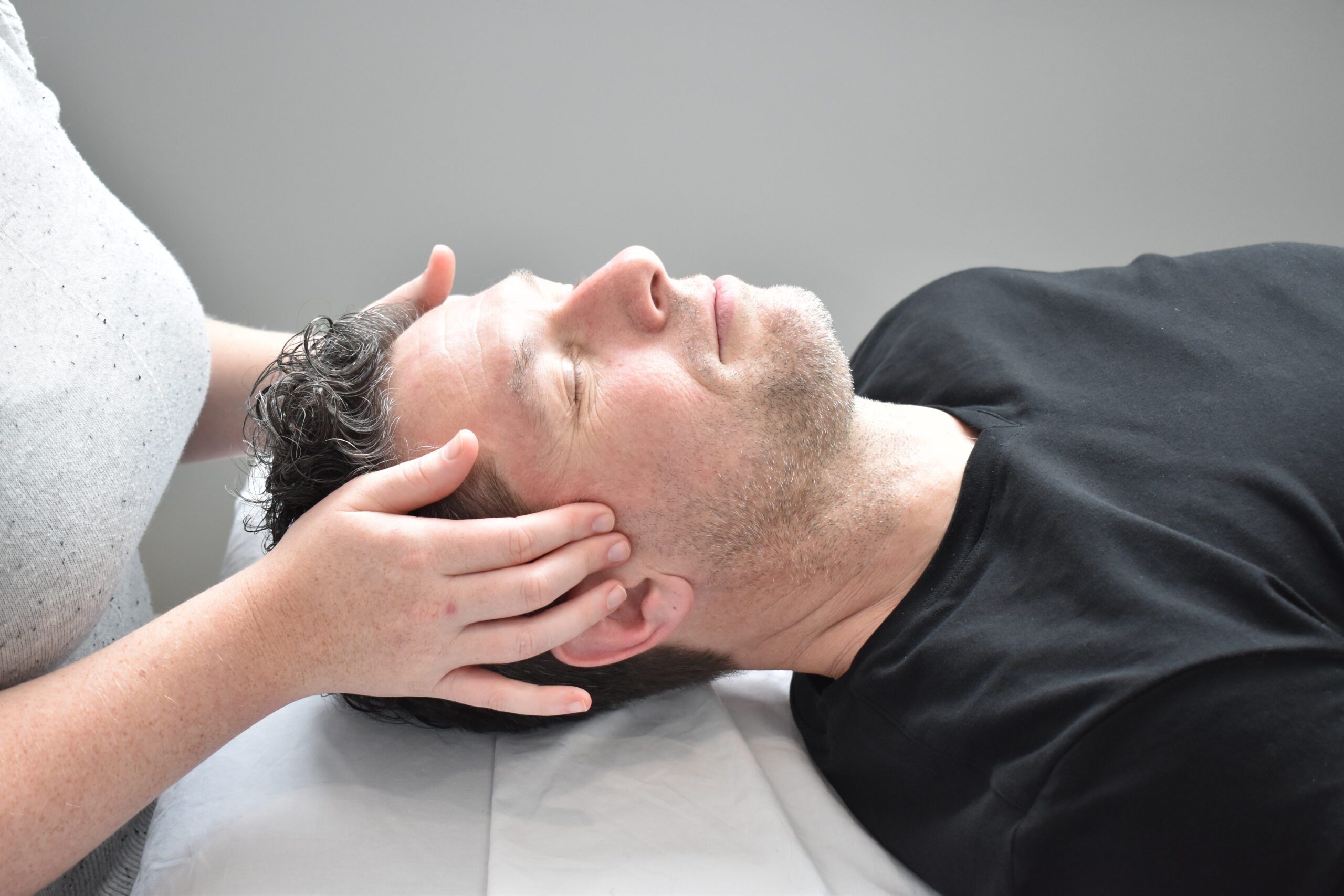
What to Expect in a Craniosacral Therapy (CST) Session in India If you’re dealing with stress, headaches, or body pain, Craniosacral Therapy (CST) can help. It’s a gentle, hands-on method that focuses on your brain, spine, and the fluid around them (cerebrospinal fluid) to improve your health and well-being. Here’s a simple step-by-step guide to what happens during a CST session in India: 🧘 Step-by-Step: What Happens in a CST Session? Step 1: Initial Consultation (10–15 Minutes) The therapist will ask you about: They may also check: Step 2: The Therapy Session (45–60 Minutes) What You Might Feel: The therapist does not force any movements. They simply follow your body’s signals. Step 3: After the Session (10–15 Minutes) After the session, the therapist may: Common Results After CST: 🔬 How Craniosacral Therapy Works CST may be gentle, but it can have strong effects. It helps by: ✅ Who Should Try CST in India? This therapy can help many people, like: 💰 Cost and Sessions in India 🚫 What CST Does NOT Do 🌟 Tips for First-Time Clients ✨ Ready to Begin Your Healing? Whether you’re stressed, in pain, or simply want to relax, CST can help your body feel better and more balanced.Book your session today with Cranio by Vishakha and start your healing journey. 👉 Visit craniobyvishaka.com to schedule your appointment.
Exploring BCST: The Healing Power of Craniosacral Therapy
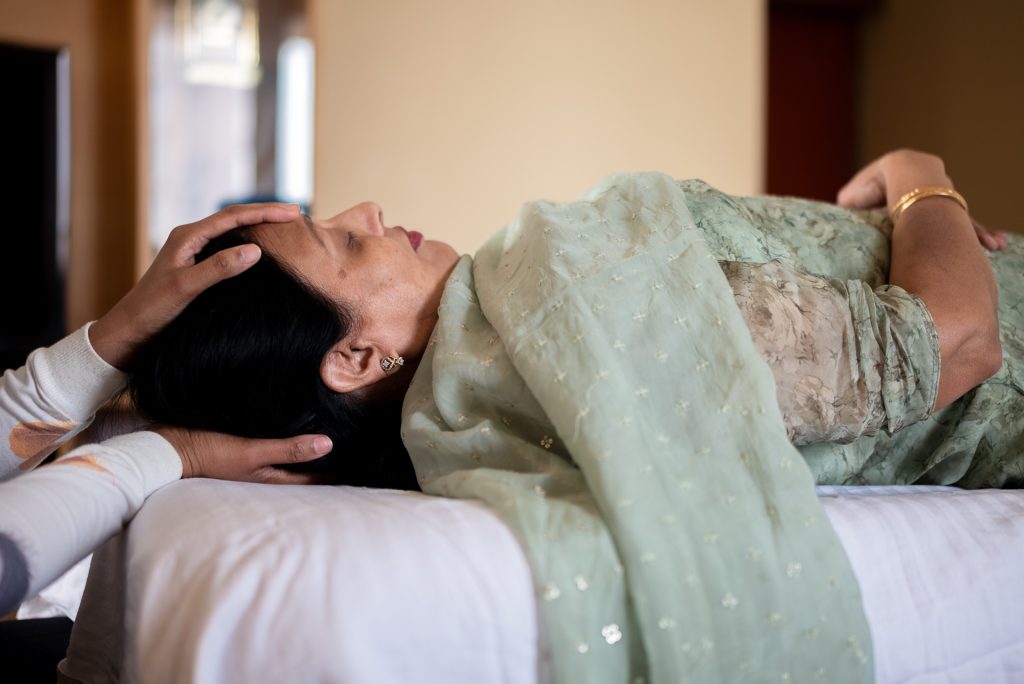
Exploring BCST: The Healing Power of Craniosacral Therapy BCST is a powerful therapeutic approach that has been gaining recognition and acceptance for its ability to support and enhance the body’s natural healing processes. While it may sound like an alternative or unconventional treatment, BCST has found its place in the world of holistic health, offering relief from a wide range of physical and emotional ailments. This article delves into what BCST is, how it helps people, and why this therapy is worth considering for your health and well-being. What is BCST (Biodynamic Craniosacral Therapy)? Biodynamic Craniosacral Therapy (BCST) is a refined form of craniosacral therapy that works with the body’s natural rhythms and movements. Unlike traditional massage therapies or chiropractic treatments that focus on muscular manipulation or bone alignment, BCST centers on the craniosacral system—the membranes and fluid surrounding the brain and spinal cord. By gently working with the rhythm of this system, BCST practitioners aim to enhance the flow of cerebrospinal fluid, which is believed to promote the body’s inherent ability to heal and restore balance. BCST differs from other forms of craniosacral therapy due to its emphasis on the biodynamic principles of energy and fluidity. Rather than using direct physical manipulation, BCST practitioners work to release tension in the body by listening to its subtle rhythms and supporting the client in finding their own balance. It is often described as deeply relaxing and meditative, allowing the body to unlock and release emotional and physical tension. How Craniosacral Therapy Helps People Promotes Deep Relaxation and Stress Relief One of the primary benefits of BCST is its ability to promote deep relaxation. Many patients report feeling a profound sense of calm and peace after a session. Stress and anxiety can accumulate in the body, leading to physical symptoms such as headaches, back pain, digestive issues, and even chronic fatigue. By addressing these symptoms at their source—deep within the craniosacral system—BCST helps reset the body’s stress-response mechanisms, promoting relaxation and allowing healing to begin. Addresses Chronic Pain and Tension BCST has shown great promise in treating chronic pain conditions such as migraines, tension headaches, back pain, and neck pain. The gentle movements used in BCST can help release restrictions in the craniosacral system that may be contributing to these ailments. By restoring proper fluid flow and alignment, BCST offers lasting relief for many individuals who have struggled with chronic pain for years. The therapy is particularly beneficial for people who have not found relief through more conventional treatments. Supports Emotional Healing BCST is not only about physical healing; it also addresses emotional and mental well-being. It is well-known for its ability to help release repressed emotions that are stored in the body. Traumatic experiences, both physical and emotional, can result in tension or blockages that affect the body’s natural rhythms. BCST helps release these blockages by working on the body’s energetic systems, facilitating emotional healing. Many people report feeling lighter and more balanced after BCST sessions, as the therapy enables them to process and release past trauma and emotional stress. Improves Sleep Quality Another common benefit of BCST is improved sleep. People struggling with insomnia, stress-related sleep disturbances, or restless sleep patterns may find relief in BCST. By improving the functioning of the central nervous system and reducing stress, BCST can help restore natural sleep cycles. The deep relaxation that comes with each session calms the nervous system and allows the body to enter restorative sleep, which is essential for overall health. Boosts Immune System Function The body’s immune system can be deeply affected by stress and chronic tension. By supporting the flow of cerebrospinal fluid and improving the health of the craniosacral system, BCST can help optimize immune system function. Research suggests that a balanced, well-functioning craniosacral system supports the body’s ability to heal itself, including strengthening immune responses and aiding in recovery from illness or injury. Assists in Recovering from Injuries and Surgeries People recovering from surgery or physical injuries often experience restrictions in the body’s normal fluid and energy flow. BCST is highly effective for accelerating recovery by promoting tissue healing, reducing swelling, and increasing flexibility. The therapy works on a deep, subtle level, encouraging the body to repair itself from within. It is particularly useful for those who have undergone trauma, accidents, or surgeries that may have caused long-term issues or scarring. Helps with Neurological Disorders BCST is increasingly being used to support people with neurological disorders such as multiple sclerosis (MS), cerebral palsy, and Parkinson’s disease. The therapy helps improve coordination, balance, and motor function by addressing the nervous system’s needs and restoring its natural rhythms. It also supports emotional and psychological well-being, offering a holistic approach to managing these conditions. Why BCST Works BCST works on the principle that the body has an innate capacity to heal itself when given the right conditions. The craniosacral system is crucial in this process as it houses the brain and spinal cord, which control all body functions. Any restrictions or imbalances in this system can lead to a cascade of issues throughout the body. BCST practitioners work to release these restrictions, allowing the body to return to its natural state of balance and health. The benefits of BCST stem from its gentle, non-invasive approach. Unlike conventional therapies that often focus on manipulating or adjusting body parts, BCST relies on the natural rhythms of the body. Practitioners use light touch to encourage the body’s self-healing mechanisms, working with the system rather than forcing changes upon it. This creates an environment where the body feels safe to release tension and begin the healing process. Current Trends and Statistics Supporting Craniosacral Therapy The popularity of alternative and holistic therapies like BCST has grown significantly in recent years, as more people seek natural and non-invasive treatments for chronic pain, emotional distress, and overall well-being. According to a 2023 survey by the National Center for Complementary and Integrative Health (NCCIH), nearly 38% of American adults use some form of complementary health approach,
